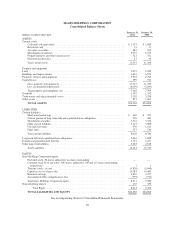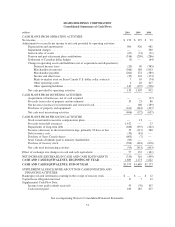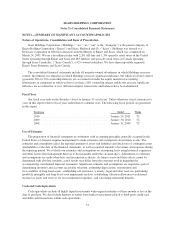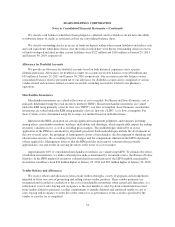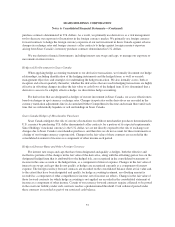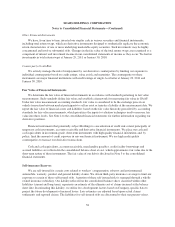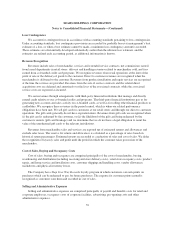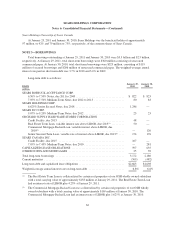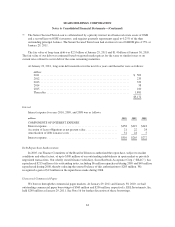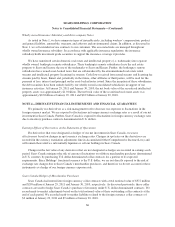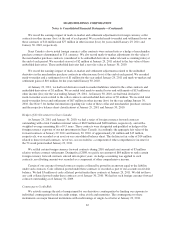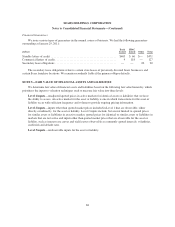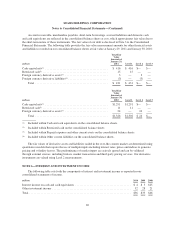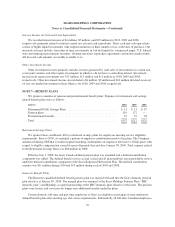Sears 2010 Annual Report Download - page 60
Download and view the complete annual report
Please find page 60 of the 2010 Sears annual report below. You can navigate through the pages in the report by either clicking on the pages listed below, or by using the keyword search tool below to find specific information within the annual report.SEARS HOLDINGS CORPORATION
Notes to Consolidated Financial Statements—(Continued)
Pre-Opening Costs
Pre-opening and start-up activity costs are expensed in the period in which they occur.
Advertising Costs
Advertising costs are expensed as incurred, generally the first time the advertising occurs, and amounted to
$2.0 billion, $1.9 billion, and $2.1 billion for 2010, 2009, and 2008, respectively. These costs are included within
selling and administrative expenses in the accompanying consolidated statements of income.
Income Taxes
We account for income taxes in accordance with accounting standards pertaining to such taxes.
Accordingly, we provide deferred income tax assets and liabilities based on the estimated future tax effects of
differences between the financial and tax basis of assets and liabilities based on currently enacted tax laws. The
tax balances and income tax expense recognized by us are based on management’s interpretation of the tax laws
of multiple jurisdictions. Income tax expense also reflects our best estimates and assumptions regarding, among
other things, the level of future taxable income and tax planning. Future changes in tax laws, changes in projected
levels of taxable income, tax planning, and adoption and implementation of new accounting standards could
impact the effective tax rate and tax balances recorded by us.
Stock-based Compensation
We account for stock-based compensation arrangements in accordance with accounting standards pertaining
to share-based payment transactions, which requires us to both recognize as expense the fair value of all stock-
based compensation awards (which includes stock options, although there were no options outstanding in 2010)
and to classify excess tax benefits associated with share-based compensation deductions as cash from financing
activities rather than cash from operating activities. We recognize compensation expense as awards vest on a
straight-line basis over the requisite service period of the award.
Earnings Per Common Share
Basic earnings per common share is calculated by dividing net income attributable to Holdings’
shareholders by the weighted average number of common shares outstanding for each period. Diluted earnings
per common share also includes the dilutive effect of potential common shares, exercise of stock options and the
effect of restricted stock when dilutive.
New Accounting Pronouncements
Disclosures about Fair Value Measurements
In January 2010, the FASB issued an accounting standards update to improve disclosures about fair value
measurements. The update amends existing accounting rules regarding fair value measurements and disclosures
to add new requirements for disclosures related to transfers into and out of investment Levels 1 and 2, and
separate disclosures about purchases, sales, issuances, and settlements relating to Level 3 investment
measurements. It also clarifies existing fair value disclosures about the level of disaggregation, as well as inputs
and valuation techniques used to measure fair value. The update is effective for the first reporting period
beginning after December 15, 2009, except for the requirement to provide the Level 3 activity of purchases,
sales, issuances, and settlements on a gross basis, which will be effective for years beginning after December 15,
60


